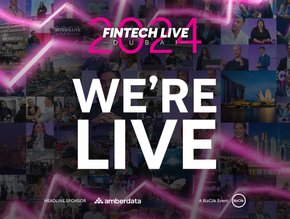To navigate the road ahead, banks need new visibility

Knowing where you want to go is always the first step to reaching your destination. But if you can understand how you got here, where you are, and what’s coming next, your trip will be that much more successful.
That’s my advice for financial services firms trying to navigate digital transformation and the impacts of COVID-19: read the signs.
Today’s reality for banks is challenging. Expectations have shifted dramatically since early 2020. Workers, both onsite and remote, are under additional pressure. And consumers’ nuanced preferences have only become more complex.
If you want to understand what they want, how they feel, and how well you’re meeting their expectations, you must read the signs. Visibility enabled by analytics tools can help you understand what’s happening and anticipate what’s next, offering the insight you need to take next steps.
Modern analytics tools offer speed and simplicity
In a time when banks are flooded with data – about operations, transactions, employees, and customers – it can be difficult to separate useful information from the noise. Modern analytics and visibility tools simplify access to data and insights. By connecting people, information, and ideas, they can enable fast, confident decisions based on deep insights.
Intelligent technologies are key to these tools. Using artificial intelligence, machine learning, business intelligence, and the cloud, these tools can help banks analyze past and present situations while also simulating future scenarios. In other words, they use data to help banks read the signs of today’s market.
Earlier generations of analytics expected business users to submit queries to IT personnel – requiring scarce technology expertise or data science skills. Complex queries also consumed CPU cycles, often slowing system performance.
These analytics projects took so long that insights often were not useful. Even today, some banks run analytics on their marketing campaigns and receive results three months later – dated information that may have little or no relevance in today’s dynamic market conditions.
The good news is that advanced analytics solutions are built on in-memory technology, which allows business users to query the data and receive results nearly instantly. These solutions allow business users to drill for insights that can help speed up decision-making.
Even better, these solutions can stream data from different systems, lines of business, and other siloes. Modern analytics allow banks to get a more complete picture of their customers, operations, and employees. This is especially useful for the many financial services institutions that have grown through merger and acquisition activity.
Innovators turn insight into action
Some leading banks are already using these tools to provide personalized products and services to customers, develop new business models, and make progress on their journey to digital transformation. Here are a few examples.
JPMorgan offers Morgan Money, a trading and risk management system for corporate treasurers. The system delivers a real-time dashboard to customers, who increasingly expect a streamlined customer experience.
Morgan Money offers these users cash visibility and a single access point for operations – helping companies securely invest when, where, and how they want. JPMorgan Asset Management recently announced a new partnership with SAP. Leveraging SAP Cloud Platform, the firm's liquidity management platform, Morgan Money, will be available to SAP customers through SAP Treasury Management, offering customers real-time cash visibility and allowing them to improve liquidity and lower risk.
Another example of analytics-driven innovation is Discovery Bank. The South African bank rewards its customers for managing their money well. The concept is based on the idea that incentivizing customers to make better financial decisions generates higher savings levels, lower risk, and increased wealth for society as a whole.
Discovery Bank’s business model tracks customer progress against weekly goals. Technology helps the bank assign dynamic interest rates according to customer behaviour. More responsible behaviour can increase savings rates or reduce loan rates, for example. Through the innovative use of analytics and engagement technologies, the bank is meeting its goals of helping people become healthier while enhancing and protecting their lives.
By gaining better insight into its transactional data, Erste Group Bank is able to offer highly tailored, relevant products and services to its 16.2 million customers. The bank, based in Vienna, implemented an advanced, in-memory computing platform that unified its international banking operations. Now a single digital core unites the enterprise and helps the bank drive innovation.
Erste replaced batch processes with near-real-time in-memory computing, optimizing its finance, controlling, planning, and procurement processes. Increased transparency enables faster, better reporting, helping the bank make reliable decisions and accelerate approval processes. Personalized, consumer-grade user experiences allow Erste to deliver on its promise of making life easier through intelligent, adaptable technologies.
The time is now
By increasing visibility and embracing analytics, these banks and others are minimizing disruption and keeping their businesses viable even during considerable financial and societal turmoil. In short, greater insight is helping banks stay relevant in a fintech world.
And not a moment too soon. A recent report indicates that the pandemic is slowing investments in the fintech industry, thanks to the lockdowns in many countries. This pause may be the perfect time for banks to get ahead of the digital transformation curve by embracing visibility and analytics technologies.
For banks, survival in a post-COVID world will depend on their ability to understand the needs of their ecosystems, operations, employees, and customers. The ability to meld non-traditional and traditional offerings into a whole that meets changing customer needs – driven by the insights enabled by powerful analytics and intelligent technologies – is the future of banking.
It’s time to accelerate your journey. Is your bank able to read the signs?
This article was contributed by Falk Rieker, Global Head of the Banking Industry Business, SAP






